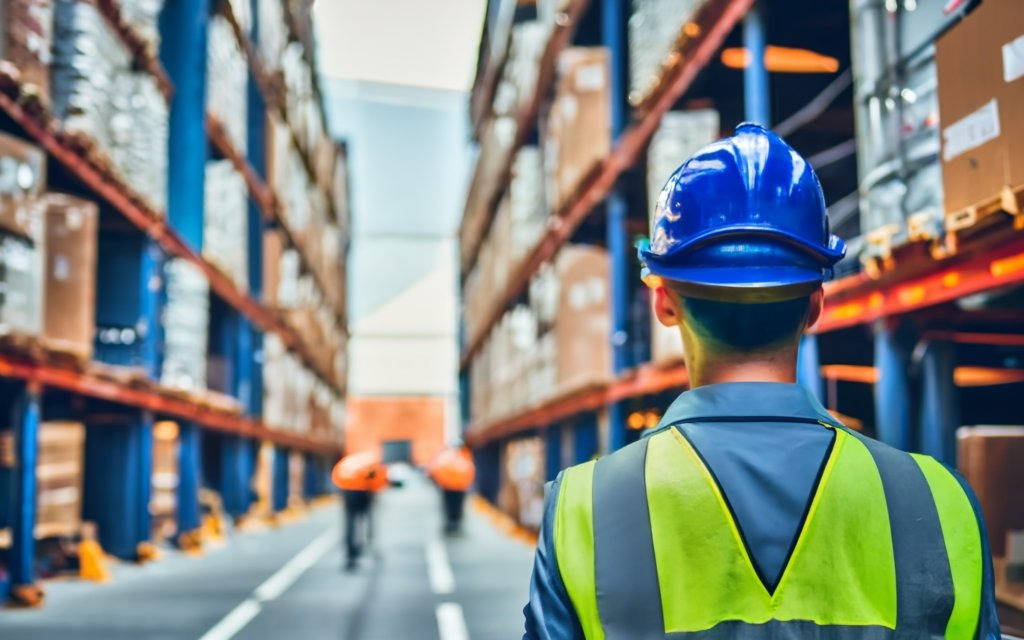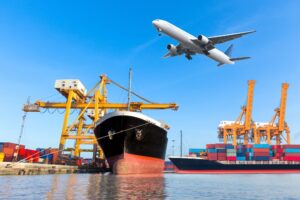China and Italy have a long and historic trading relationship that dates back to the ancient Silk Road. Today, China is Italy’s third-largest import partner, accounting for over 36 billion USD in 2020. Some of the most popular products imported from China to Italy are furniture, iron, steel, clothes, and plastic goods.
If you are an importer looking for a fast and reliable way to ship your goods from China to Italy, air freight might be the best option for you. Air freight can offer you several advantages, such as:
- Shorter transit times: Air freight can deliver your goods in a matter of days, compared to weeks or months by sea or rail freight.
- Less risk of damage or theft: Air freight is more secure and less exposed to external factors that might harm your goods, such as weather, accidents, or piracy.
- Easier customs clearance: Air freight usually requires less documentation and formalities than other modes of transportation, making the customs clearance process smoother and faster.
However, air freight also comes with some challenges and costs that you need to consider before choosing this mode of transportation. In this article, we will guide you through the steps and factors involved in air shipping from China to Italy, such as:
- Understanding the air freight journey
- Preparing your shipment for air freight
- Choosing the right air freight carrier
- Customs procedures and documentation
- Tracking and monitoring your air freight shipment
- Dealing with potential challenges and delays
- Cost considerations in air freight transportation
Understanding the air freight journey

The air freight journey from China to Italy consists of several stages, each with its own requirements and processes. Here is an overview of the main steps involved in air shipping from China to Italy:
- Pick-up: The first step is to have your goods picked up from your supplier’s warehouse or factory in China and transported to the nearest airport. This can be done by a truck, a train, or a combination of both, depending on the distance and the availability of transport options. You can arrange the pick-up yourself or hire a freight forwarder to do it for you.
- Export clearance: The next step is to have your goods cleared for export by the Chinese customs authorities. This involves submitting the necessary documentation, such as a commercial invoice, a packing list, and an air waybill, and paying any applicable taxes or duties. You can do this yourself or hire a customs broker to do it for you.
- Air transport: The third step is to have your goods loaded onto a plane and flown to Italy. Depending on the availability of flights and the destination airport, your goods may be transported by a direct flight or a flight with one or more stops or transfers. You can choose the airline yourself or hire a freight forwarder to do it for you.
- Import clearance: The fourth step is to have your goods cleared for import by the Italian customs authorities. This involves submitting the necessary documentation, such as a commercial invoice, a packing list, an air waybill, and a customs declaration, and paying any applicable taxes or duties. You can do this yourself or hire a customs broker to do it for you.
- Delivery: The final step is to have your goods delivered from the airport to your final destination in Italy. This can be done by a truck, a train, or a combination of both, depending on the distance and the availability of transport options. You can arrange the delivery yourself or hire a freight forwarder to do it for you.
Preparing your shipment for air freight

Before you ship your goods from China to Italy by air, you need to make sure that they are properly prepared for air transport. This means that you need to:
- Pack your goods securely and safely: You need to use suitable packaging materials and methods to protect your goods from damage, theft, or loss during the air freight journey. You also need to label your packages clearly and accurately with your name, address, contact details, and any special instructions or handling requirements.
- Measure and weigh your goods accurately: You need to measure and weigh your goods precisely to calculate the chargeable weight of your shipment. The chargeable weight is the weight used by the airline to determine the cost of your air freight. It is either the actual gross weight or the volumetric weight of your shipment, whichever is higher. The volumetric weight is calculated by multiplying the length, width, and height of your package in centimeters and dividing it by 6,000.
- Choose the right incoterm: You need to choose the right incoterm to define the responsibilities and risks of you and your supplier in the air freight process. The incoterm is a three-letter code that specifies who pays for the transportation, insurance, and customs clearance of the goods, and who bears the liability in case of damage, loss, or delay. The most common incoterms for air freight are EXW (Ex Works), FCA (Free Carrier), CPT (Carriage Paid To), CIP (Carriage and Insurance Paid To), DAP (Delivered At Place), and DDP (Delivered Duty Paid).
- Comply with the regulations and restrictions: You need to comply with the regulations and restrictions imposed by the Chinese and Italian authorities, as well as the airline, regarding the types and quantities of goods that can be shipped by air. Some goods may be prohibited, restricted, or subject to special requirements or permits for air transport, such as dangerous goods, live animals, plants, food, drugs, or weapons. You also need to comply with the security and safety standards and procedures for air freight, such as screening, scanning, or sealing of your packages.
Choosing the right air freight carrier

When you ship your goods from China to Italy by air, you have several options to choose from in terms of the air freight carrier. You can either:
- Book directly with an airline: You can book your air freight directly with an airline that operates flights from China to Italy. This can give you more control and flexibility over your shipment, as well as lower costs. However, this also means that you have to take care of all the other aspects of the air freight process yourself, such as the pick-up, delivery, and customs clearance of your goods. You also have to deal with the availability and capacity of the flights, as well as the potential changes or disruptions in the schedule or route.
- Hire a freight forwarder: You can hire a freight forwarder to handle your air freight for you. A freight forwarder is a company that acts as an intermediary between you and the airline, as well as the other parties involved in the air freight process, such as the trucking company, the customs broker, or the insurance company. A freight forwarder can offer you a range of services, such as booking the flight, arranging the pick-up, delivery, and customs clearance of your goods, providing insurance and tracking options, and solving any issues or problems that may arise. However, this also means that you have to pay a fee to the freight forwarder, as well as trust them with your shipment.
- Use a courier service: You can use a courier service to ship your goods from China to Italy by air. A courier service is a company that specializes in delivering small parcels and documents by air, such as DHL, UPS, FedEx, or TNT. A courier service can offer you a fast and convenient way to ship your goods, as well as a door-to-door delivery, a tracking system, and an insurance coverage. However, this also means that you have to pay a higher cost per kilogram, as well as follow the size and weight limitations of the courier service. You also have to comply with the terms and conditions of the courier service, which may differ from the standard air freight regulations and restrictions.
Customs procedures and documentation

One of the most important and complex aspects of air shipping from China to Italy is the customs clearance process. Customs clearance is the process of obtaining permission from the customs authorities to import or export goods. It involves submitting the necessary documentation, paying the applicable taxes and duties, and complying with the regulations and restrictions of both countries.
The documentation required for customs clearance may vary depending on the type, value, and origin of the goods, as well as the incoterm and the mode of transportation. However, some of the most common documents required for air freight from China to Italy are:
- Commercial invoice: A document that provides information about the seller, the buyer, the goods, the price, the terms of sale, and the payment method. It is used to determine the customs value and the duties and taxes of the goods.
- Packing list: A document that provides information about the quantity, weight, dimensions, and description of the packages and the goods. It is used to verify the contents and the condition of the shipment.
- Air waybill: A document that serves as a contract of carriage and a receipt of the goods between the shipper and the carrier. It provides information about the shipper, the consignee, the carrier, the flight details, the chargeable weight, the freight charges, and the special instructions or handling requirements. It is used to track and monitor the shipment.
- Customs declaration: A document that declares the details of the goods to the customs authorities, such as the origin, destination, value, quantity, and classification. It is used to assess the duties and taxes and to clear the goods for import or export.
- Certificate of origin: A document that certifies the origin of the goods, such as the country where they were produced, manufactured, or processed. It is used to determine the eligibility of the goods for preferential tariffs or trade agreements, such as the EU-China Comprehensive Agreement on Investment (CAI).
- sanitary or phytosanitary certificate, an inspection certificate, or a conformity certificate to prove that they meet the health, safety, or quality standards of the importing country.
- a CITES permit, an endangered species permit, or a wildlife trade permit to prove that they are legally traded and do not threaten the conservation of the species.
- a dual-use or military goods license, an export control license, or a strategic goods license to prove that they are not used for prohibited or restricted purposes, such as weapons of mass destruction, terrorism, or human rights violations.
The taxes and duties that apply to your goods may also vary depending on the type, value, and origin of the goods, as well as the incoterm and the mode of transportation. However, some of the most common taxes and duties that apply to air freight from China to Italy are:
- Value-added tax (VAT): A tax that applies to the consumption of goods and services in Italy. The standard VAT rate in Italy is 22%, but some goods may be subject to reduced rates of 10%, 5%, or 4%, or exempt from VAT altogether. The VAT is calculated on the customs value of the goods, plus the freight and insurance costs, plus the customs duties and other taxes.
- Customs duty: A tax that applies to the import of goods from outside the European Union (EU). The customs duty rate in Italy depends on the classification and the origin of the goods, according to the EU’s Common Customs Tariff (CCT). The customs duty is calculated on the customs value of the goods, which is usually the transaction value or the price paid for the goods, plus the freight and insurance costs. Some goods may be subject to preferential tariffs or trade agreements, such as the EU-China CAI, which can reduce or eliminate the customs duty.
- Excise duty: A tax that applies to the import of specific goods, such as alcohol, tobacco, fuel, or electricity. The excise duty rate in Italy depends on the type and the quantity of the goods, according to the EU’s harmonized excise duty system. The excise duty is calculated on the customs value of the goods, plus the freight and insurance costs, plus the customs duty and the VAT.
- Other taxes and fees: Depending on the nature and the value of the goods, other taxes and fees may apply to your air freight from China to Italy, such as anti-dumping duty, countervailing duty, environmental tax, statistical fee, or administrative fee.




